How To Get Started with Web Scraping: A Beginner’s Guide
Everyday, we come across different forms of Data. Data that we analyze, understand, and sometimes, even collect. These three key ways of interacting with data form the bedrock of data analytics. In the current digital landscape of the world, data analytics has quickly grown to become an integral part of many businesses, with many using web scraping, AI, machine learning, and a host of other techniques and technologies to gather unique insight in hopes of improving their business.
That said, in this article, we’ll be taking a look at web scraping, one of the many techniques that businesses use to collect data from websites on the internet. We’ll be explaining what it is, why it's important, considering the legal implications of it, and getting into the details of how it works.
Let’s get to it!
What is Web Scraping?
If you've ever manually used your mouse to highlight certain details from a website, and then copied it to an Excel sheet, congratulations! You just practiced web scraping, albeit on a much smaller scale.
Web scraping, or data scraping as is sometimes referred to, is a data collection technique that is used to collate content and information from the internet, typically with the help of web scrapers.
If you’re wondering, web scrapers generally refer to software applications or bots that are programmed to navigate, retrieve relevant pages, and extract valuable information from web pages.
Using web scrapers is what differentiates web scraping from manually copying information from a website to an Excel sheet.
Web scraping is automated, and can copy millions of data automatically in mere minutes. Usually, this “millions of data” will initially be on a web page or web pages, before they are compiled to any offline storage of your choosing.
Is Web Scraping Legal?
Before delving further into the article, let’s address the elephant in the room: Is it legal to copy information from someone’s website? Is web scraping legal? Isn’t that a type of copyright infringement? Well, not exactly.
Web scraping isn’t hacking. It’s simply copying information that is already publicly available. information that humans can read, into a more machine-friendly format. So yes, it is legal. But there’s a catch.
While it is legal to scrape the web, there’s a limit to the kind of information you can scrape, and how you do it. Generally, you want to avoid personal data, and server overload. Your main focus should be on the publicly available information.
To further understand this concept, take a look at this example: while it is perfectly legal to take pictures with your phone, taking pictures of sensitive locations or confidential documents could result in bad legal repercussions.
Types of Web Scrapers
Now, let’s examine the types of web scrapers that exist. Web scrapers can be classified based on various criteria, including their origin, structure, and execution environment. Let’s look at these classifications:
1. Self-built vs. Pre-built Web Scrapers
- Self-built Web Scrapers are scrapers that are programmed by expert programmers using Python
- Pre-built Web Scrapers unlike self-built are already made, and are available for download. They often come equipped with advanced customizable options, and are suited to the needs of novices.
2. Browser Extension vs. Software Web Scrapers
- Browser Extension Web Scrapers are integrated as extensions in browsers and are easy to run. However, they tend to be limited by the browser’s features and abilities. This type of web scrapers tend to function even better on antidetect browsers, but more on that latter.
- Software Web Scrapers are downloadable and installable on computers. They are more complex than browser extensions, and they offer advanced features without the limitations tied to the browser's capabilities.
3. Cloud vs. Local Web Scrapers
- Cloud Web Scrapers operate on off-site, or as the name implies, cloud-based servers provided by the scraper's company. Doing this takes the load off your computer and carries out the entire scraping process without the limitation of your computer’s hardware capabilities.
- Local Web Scrapers run on your computer, and they utilize your software and hardware capabilities.
Different kinds of web scrapers all have their advantages and disadvantages depending on your use case. All in all, when you’re ready to begin web scraping, there will be one that suits your needs and expertise.
What is Web Scraping used for?
Now that we know what web scraping is, what is it used for? If data analytics is important, data collection also becomes important, and so does web scraping. Data collection is an integral part of many businesses, so if we look hard enough, we’ll find a use for data extraction, and consequently web scraping in any business sector. That said, here are three quick applications
1. Web scraping in Retail and E-commerce
In the Retail and E-commerce sector, where competition is intense and data collection is king, web scraping shines through. If you want to stay ahead of the industry, you’ll constantly need access to the right data and that is what web scraping allows.
Web scraping enables a deeper understanding of the strategies that your competitors use to enhance their online traffic. If you could gain access to your competitor’s data via web scraping, you can make adjustments to your own marketing strategies, ultimately boosting sales performance. Service providers like Scrape Yogi offer authentic scraping services to eCommerce brands.
2. Web scraping in Finance and Fintech
In finance and the stock market, web scraping can be a useful tool that helps gather real-time stock data, financial reports, and info about how some financial companies are running. You’ll find this information particularly important when making investment choices and plans.
Also, many financial market participants leverage web scraping to gain insights into the financial landscape. It allows them to have a clear picture of the financial world, enabling quick and smart decision-making.
3. Web scraping in Digital marketing and SEO
Web scraping is widely utilized in the digital marketing industry to gather valuable data concerning customer preferences, online behavior, trending topics, and competitor strategies.
By leveraging web scraping techniques, if you’re a digital marketer, you gain actionable insights that enable you to tailor your strategies more precisely. This ensures that you remain ahead of the ever-evolving landscape of online consumer trends.
Tools You’ll Need to Start Web Scraping
Depending on the type of web scraping you want to carry out, there are three major tools you’ll need:
1. Antidetect Browser
Antidetect browsers utilize advanced technologies like data spoofing to safeguard the privacy of internet users. Some top-notch antidetect browsers, like the industry-leading AdsPower, will also offer multiple profile management. You can read all about antidetect browsers in this in-depth article.
Why do you need an antidetect browser for web scraping? Well, many websites use a lot of tracking technologies including cookies, digital fingerprints, and web beacons to gather information from their visitors. So while you’re scraping a website, said website could be gathering information about you. Hence the need for an antidetect browser.
For an antidetect browser that combines effectiveness with affordability, AdsPower is the go-to choice.
2. Python
Python is perhaps the most important programming language to learn if you’re trying to become an expert at many different types of data extraction and web scraping. It’s versatile, robust, and well-suited to the needs of beginners and experts. Also, many of the more popular web scraping libraries are built on Python
To learn more about Python for web scraping, you can visit here.
3. Web Scraping Libraries
These libraries act as robust frameworks that streamline data extraction from websites. There are four popular libraries.
Beautiful Soup
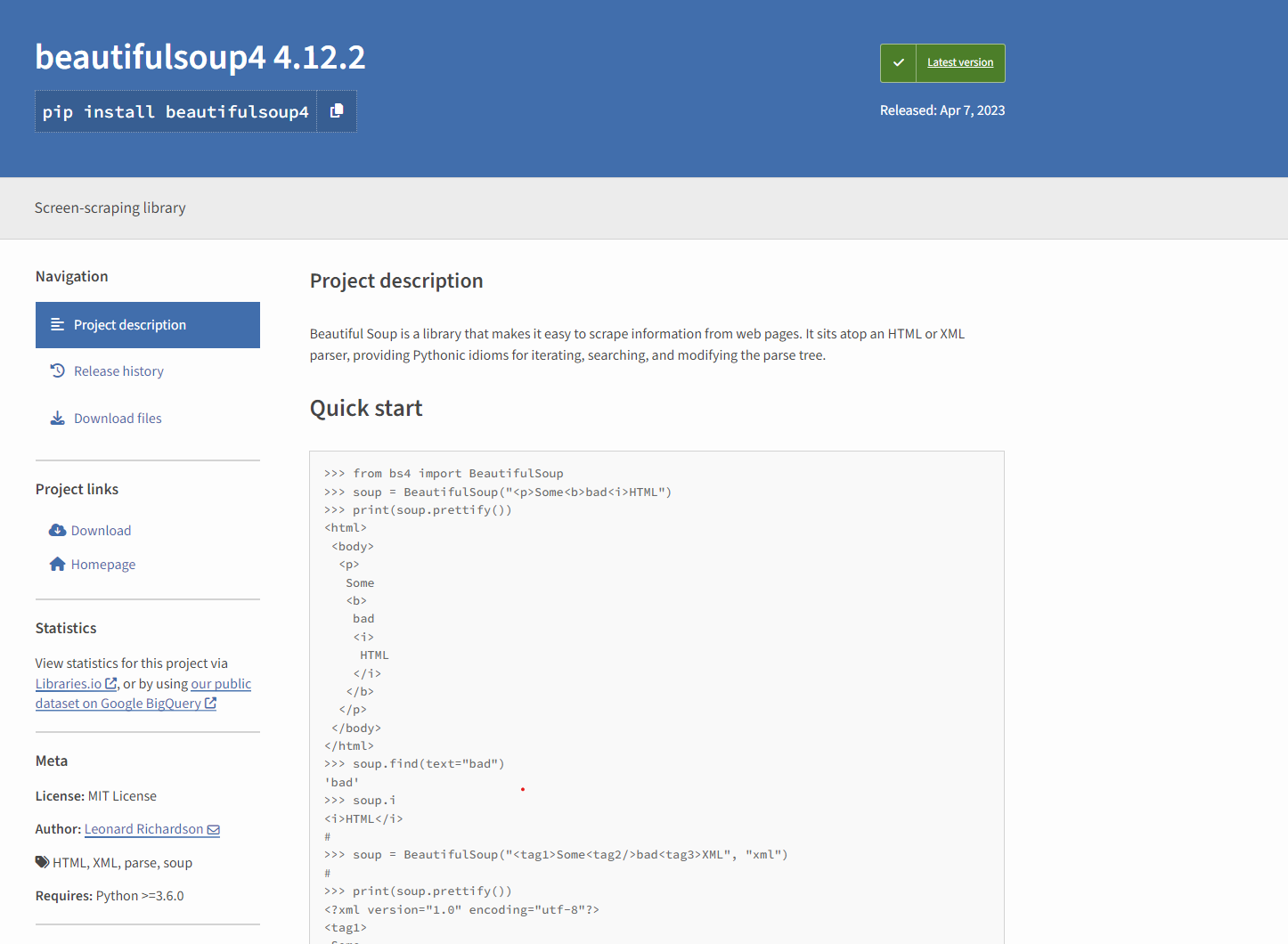
Beautiful Soup is a Python library that specializes in pulling data out of HTML and XML files. It provides Pythonic idioms for iterating, searching, and modifying the parse tree, making it a favorite among web scrapers for its simplicity and versatility. Beautiful Soup is ideal for parsing HTML and XML documents, navigating the parse tree, and extracting relevant information.
Scrapy

Scrapy is an open-source, collaborative web crawling framework for Python, that streamlines data extraction from websites with its built-in features. Scrapy is ideal for expansive web scraping endeavors and well-suited for large-scale projects.
Pandas

Pandas is a powerful data manipulation and analysis library in Python. While not explicitly a web scraping library, it is often used with other libraries to efficiently manipulate and analyze scraped data. It is great at data cleaning, transformation, and analysis after scraping.
ParseHub

ParseHub stands out as a visual data extraction tool that streamlines web scraping through a point-and-click approach. With its user-friendly interface, it eliminates the need for extensive coding skills. It is particularly well-suited to the needs of users who prefer a visual interface without in-depth programming knowledge.
With these tools, you’ll be well-equipped to begin your web scraping journey.
How to Get Started with Web Scraping
The specific approach to these steps may vary depending on your chosen tools, but for simplicity, we'll focus on the fundamental, non-technical aspects. Here are the sequential steps you should undertake:
Identify the URLs for scraping
While it may seem straightforward, the initial task is to determine the website you want scrape. For example, if your focus is on exploring customer book reviews, you may target relevant data from platforms like Amazon, Goodreads, or LibraryThing.
Inspect the webpage
Before coding your web scraper, it's crucial to understand what information it needs to collect. Right-clicking anywhere on the website's front end provides options like 'inspect element' or 'view page source.' This action unveils the site's underlying code, serving as the data source for the scraper. By the way, you can also use pre-built web scrapers.
Get to scrapping
Now that you've identified the relevant URLs and inspected the webpage structure, it's time to initiate the scraping procedure. This involves implementing the necessary code or utilizing web scraping tools to extract the desired data from the websites you've targeted. The specific method for carrying out this step may vary based on the chosen tools, but the fundamental goal remains the same: to systematically gather valuable information from the web.
Conclusion
Over time, web scraping has significantly evolved into a very important aspect of data analytics, and indeed businesses all around the world. It has empowered businesses to efficiently extract and analyze vast amounts of information from the internet. And as technology continues to advance, the role of web scraping is likely to expand. Very soon, web scraping will start offering even more sophisticated ways for organizations to harness the wealth of information available on the internet.
This article is just one of many free resources accessible on the AdsPower website. AdsPower offers a diverse array of materials, including guides and tutorials. Visit our website today to gain access to other free yet valuable content.

People Also Read
- How to Switch Accounts on Chrome (Mobile & Desktop)
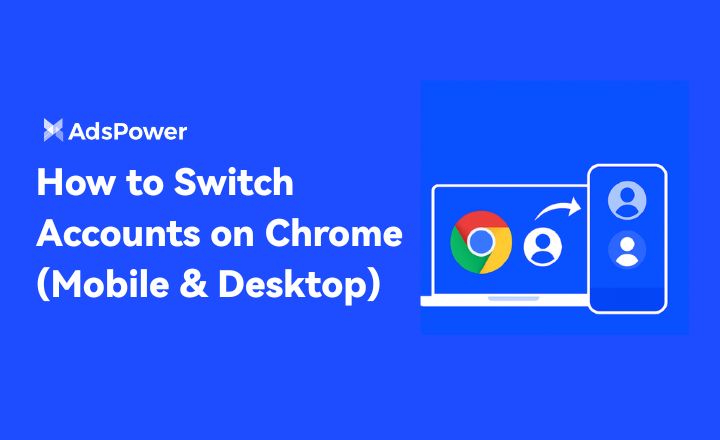
How to Switch Accounts on Chrome (Mobile & Desktop)
Learn how to switch accounts on Chrome for desktop and mobile. Avoid data mix-ups, manage multiple Google accounts safely, and use profiles for separa
- Black Friday Anti-Ban Checklist: Protect Your Ads, Payments, and Ecommerce Accounts
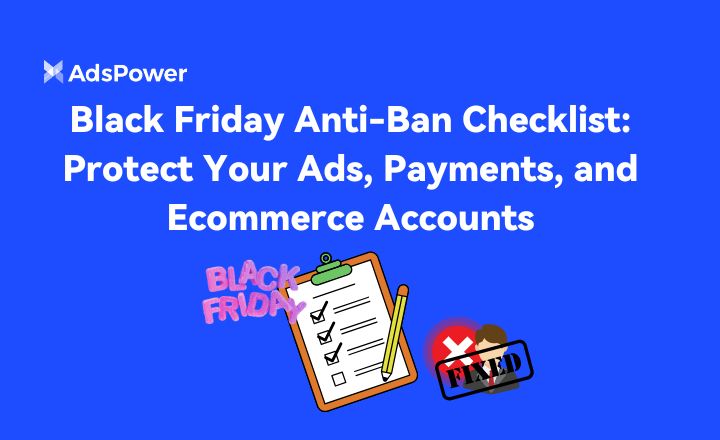
Black Friday Anti-Ban Checklist: Protect Your Ads, Payments, and Ecommerce Accounts
Protect your ads, payment gateways, and ecommerce accounts this Black Friday with a proven anti-ban checklist and AdsPower strategies to avoid flags
- The Solo Marketer's Black Friday Superpower: Scaling Like an Agency with AdsPower
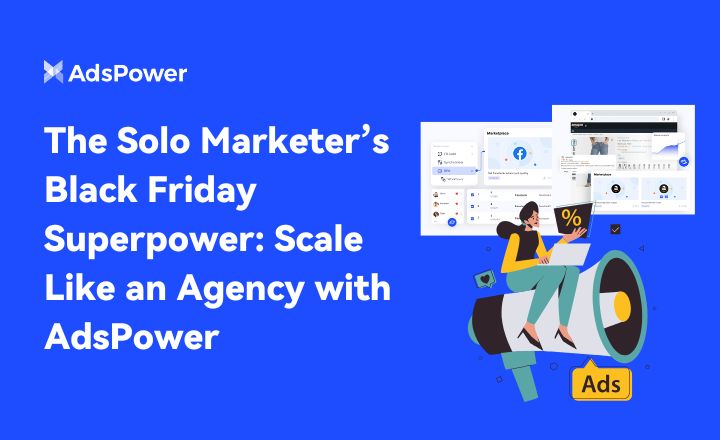
The Solo Marketer's Black Friday Superpower: Scaling Like an Agency with AdsPower
Solo marketer for Black Friday? Learn how to scale your ads, safely manage multiple Facebook & TikTok accounts, and automate tasks with AdsPower.
- Play Roblox Without VPN: Safe and Easy Ways to Access Roblox

Play Roblox Without VPN: Safe and Easy Ways to Access Roblox
Discover how to play Roblox without a VPN in 2025 safely and easily. Learn working methods, safe practices, and tips to enjoy Roblox anywhere.
- How Can I Make Money on Fiverr? (Beginner’s Guide to Earning Online)

How Can I Make Money on Fiverr? (Beginner’s Guide to Earning Online)
Learn how to make money on Fiverr in 2025 with this beginner’s guide. Discover top niches, expert tips, and how to scale your freelancing business
